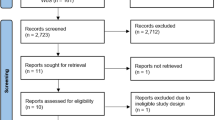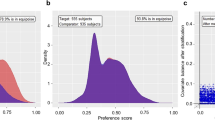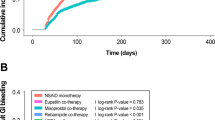Abstract
PPIs have become one of the most commonly used medications worldwide, as they are the treatment of choice for several acid-related gastrointestinal disorders. However, concerns have been raised about PPI therapy, including the risk of pneumonia, bone fractures and enteric infections, and a possible interaction with clopidogrel that could increase the risk of cardiovascular events. Observational studies have shown very modest associations between PPI therapy and these risks, although the association between PPI treatment and the risk of enteric infections seems to be stronger than the association with other risk factors. However, given the inherent limitations of observational studies, these associations could be attributable to bias and/or confounding factors. In addition, evidence from randomized, controlled trials does not support a clinically significant effect of PPI therapy on the risk of cardiovascular events in patients taking clopidogrel or the risk of pneumonia. Nevertheless, it is impossible to exclude the possibility that some of these associations might be causal or indeed that PPI therapy has an as yet unknown long-term adverse effect. As with any therapy, therefore, it is advisable to prescribe PPIs only to patients for whom these drugs have been proven beneficial.
Key Points
-
PPI therapy is associated with a risk of pneumonia, bone fracture and infective diarrhea; in patients taking clopidogrel, PPI therapy is associated with an increased risk of cardiovascular events
-
Many, if not all, of these associations are very modest, and, given the nature of observational studies, are probably attributable to confounding factors
-
The findings of randomized, controlled trials do not support a clinically important role of PPI therapy in reducing the effects of clopidogrel or in causing pneumonia
-
Although the possibility of adverse events attributable to PPI therapy cannot be excluded, it is important that PPIs are only given to patients who might benefit from them
This is a preview of subscription content, access via your institution
Access options
Subscribe to this journal
Receive 12 print issues and online access
$209.00 per year
only $17.42 per issue
Buy this article
- Purchase on Springer Link
- Instant access to full article PDF
Prices may be subject to local taxes which are calculated during checkout



Similar content being viewed by others
References
Moayyedi, P. & Axon, A. T. Review article: gastro-esophageal reflux disease—the extent of the problem. Aliment. Pharmacol. Ther. 22 (Suppl. 1), 11–19 (2005).
Fass, R. et al. The effect of dexlansoprazole MR on nocturnal heartburn and GERD-related sleep disturbances in patients with symptomatic GERD. Am. J. Gastroenterol. 106, 421–431 (2011).
Moayyedi, P. & Talley, N. J. Gastro-esophageal reflux disease. Lancet 367, 2086–2100 (2006).
Moayyedi, P. et al. The gain in quality-adjusted life months by switching to esomeprazole in those with continued reflux symptoms in primary care: EncomPASS—a cluster-randomized trial. Am. J. Gastroenterol. 105, 2341–2346 (2010).
Xiao, Y. L. et al. Prevalence and symptom pattern of pathologic esophageal acid reflux in patients with functional dyspepsia based on the Rome III criteria. Am. J. Gastroenterol. 105, 2626–2631 (2010).
Moayyedi, P., Delaney, B. C., Vakil, N., Forman, D. & Talley, N. J. The efficacy of proton pump inhibitors in nonulcer dyspepsia: a systematic review and economic analysis. Gastroenterology 127, 1329–1337 (2004).
Rostom, A., Moayyedi, P. & Hunt, R. Canadian consensus guidelines on long-term nonsteroidal anti-inflammatory drug therapy and the need for gastroprotection: benefits versus risks. Aliment. Pharmacol. Ther. 29, 481–496 (2009).
Leontiadis, G. I., Sharma, V. K. & Howden, C. W. Proton pump inhibitor treatment for acute peptic ulcer bleeding. Cochrane Database Syst. Rev. Issue 1. Art. no.: CD002094 http://dx.doi.10.1002/14651858.CD002094.pub4.
Hassan-Alin, M., Andersson, T., Niazi, M. & Röhss, K. A pharmacokinetic study comparing single and repeated oral doses of 20 mg and 40 mg omeprazole and its two optical isomers, S-omeprazole (esomeprazole) and R-omeprazole, in healthy subjects. Eur. J. Clin. Pharmacol. 60, 779–784 (2005).
Scholl, S., Dellon, E. S. & Shaheen, N. J. Treatment of GERD and proton pump inhibitor use in the elderly: practical approaches and frequently asked questions. Am. J. Gastroenterol. 106, 386–392 (2011).
IMS Health [online], (2011).
FDA. Possible fracture risk with high dose, long-term use of proton pump inhibitors [online], (2010).
Vakil, N. Acid inhibition and infections outside the gastrointestinal tract. Am. J. Gastroenterol. 104 (Suppl. 2), S17–S20 (2009).
Laheij, R. J. et al. Risk of community-acquired pneumonia and use of acid-suppressive drugs. JAMA 292, 1955–1960 (2004).
Sarkar, M., Hennessy, S. & Yang, Y. X. Proton-pump inhibitor use and the risk for community-acquired pneumonia. Ann. Intern. Med. 149, 391–398 (2008).
Herzig, S. J., Howell, M. D., Ngo L. H. & Marcantonio, E. R. Acid-suppressive medication use and the risk for hospital-acquired pneumonia. JAMA 301, 2120–2128 (2009).
Johnstone, J., Nerenberg, K. & Loeb, M. Meta-analysis: proton pump inhibitor use and the risk of community-acquired pneumonia. Aliment. Pharmacol. Ther. 31, 1165–1177 (2010).
Eom, C. S. et al. Use of acid suppressive drugs and risk of pneumonia: a systematic review and meta-analysis. CMAJ 183, 310–319 (2011).
Gulmez, S. E. et al. Use of proton pump inhibitors and the risk of community-acquired pneumonia: a population-based case-control study. Arch. Intern. Med. 167, 950–955 (2007).
Rodríguez, L. A., Ruigómez, A., Wallander, M. A. & Johansson, S. Acid-suppressive drugs and community-acquired pneumonia. Epidemiology 20, 800–806 (2009).
Horwitz, R. I. & Feinstein, A. R. The problem of “protopathic bias” in case-control studies. Am. J. Med. 68, 255–258 (1980).
Myles, P. R. et al. Risk of community-acquired pneumonia and the use of statins, ACE inhibitors and gastric acid suppressants: a population-based case control study. Pharmacoepidemiol. Drug Saf. 18, 269–275 (2009).
Sultan, N., Nazareno, J. & Gregor, J. Association between proton pump inhibitors and respiratory infections: a systematic review and meta-analysis of clinical trials. Can. J. Gastroenterol. 22, 761–766 (2008).
Estborn, L. & Joelson, S. Occurrence of community-acquired respiratory tract infection in patients receiving esomeprazole: retrospective analysis of adverse events in 31 clinical trials. Drug Saf. 31, 627–636 (2008).
Leonard, J., Marshall, J. K. & Moayyedi. P. Systematic review of the risk of enteric infection in patients taking acid suppression. Am. J. Gastroenterol. 102, 2047–2056 (2007).
Kelly, C. P. & LaMont, J. T. Clostridium difficile—more difficult than ever. N. Engl. J. Med. 359, 1932–1940 (2008).
Kazakova, S. V. et al. A hospital outbreak of diarrhea due to an emerging epidemic strain of Clostridium difficile. Arch. Intern. Med. 166, 2518–2524 (2006).
Howell, M. D. et al. Iatrogenic gastric acid suppression and the risk of nosocomial Clostridium difficile infection. Arch. Intern. Med. 170, 784–790 (2010).
Aseeri, M., Schroeder, T., Kramer, J. & Zackula, R. Gastric acid suppression by proton pump inhibitors as a risk factor for Clostridium difficile-associated diarrhea in hospitalized patients. Am. J. Gastroenterol. 103, 2308–2313 (2008).
Naggie, S. et al. A case-control study of community-associated Clostridium difficile infection: no role for proton pump inhibitors. Am. J. Med. 124, 276.e1–7 (2011).
Dial, S., Delaney, J. A., Barkun, A. N. & Suissa, S. Use of gastric acid-suppressive agents and the risk of community-acquired Clostridium difficile-associated disease. JAMA 294, 2989–2995 (2005).
Paredes-Sabja, D., Bond, C., Carman, R. J., Setlow, P. & Sarker, M. R. Germination of spores of Clostridium difficile strains, including isolates from a hospital outbreak of Clostridium difficile-associated disease (CDAD). Microbiology 154, 2241–2250 (2008).
Linsky, A., Gupta, K., Lawler, E. V., Fonda J. R. & Hermos, J. A. Proton pump inhibitors and risk for recurrent Clostridium difficile infection. Arch. Intern. Med. 170, 772–778 (2010).
Kim, J. W. et al. Proton pump inhibitors as a risk factor for recurrence of Clostridium-difficile-associated diarrhea. World J. Gastroenterol. 16, 3573–3577 (2010).
Pereira, S. P., Gainsborough, N. & Dowling, R. H. Drug-induced hypochlorhydria causes high duodenal bacterial counts in the elderly. Aliment. Pharmacol. Ther. 12, 99–104 (1998).
Dial, M. S. Proton pump inhibitor use and enteric infections. Am. J. Gastroenterol. 104 (Suppl. 2), S10–S16 (2009).
Hsu, J., Abad, C., Dinh, M. & Safdar, N. Prevention of endemic healthcare-associated Clostridium difficile infection: reviewing the evidence. Am. J. Gastroenterol. 105, 2327–2339 (2010).
Kwok, C. S., Yeong, J. K. & Loke, Y. K. Meta-analysis: risk of fractures with acid-suppressing medication. Bone 48, 768–776 (2011).
Ngamruengphong, S., Leontiadis, G. I., Radhi, S., Dentino, A. & Nugent, K. Proton pump inhibitors and risk of fracture: a systematic review and meta-analysis of observational studies. Am. J. Gastroenterol. 106, 1209–1218 (2011).
Eom, C. S., Park, S. M., Myung, S. K., Yun, J. M. & Ahn, J. S. Use of acid-suppressive drugs and risk of fracture: a meta-analysis of observational studies. Ann. Fam. Med. 9, 257–267 (2011).
Yu, E. W., Bauer, S. R., Bain, P. A. & Bauer, D. C. Proton pump inhibitors and risk of fractures: a meta-analysis of 11 international studies. Am. J. Med. 124, 519–526 (2011).
Yang, Y. X., Lewis, J. D., Epstein, S. & Metz, D. C. Long-term proton pump inhibitor therapy and risk of hip fracture. JAMA 296, 2947–2953 (2006).
Vestergaard, P., Rejnmark, L. & Mosekilde L. Proton pump inhibitors, histamine H2 receptor antagonists, and other antacid medications and the risk of fracture. Calcif. Tissue Int. 79, 76–83 (2006).
Kaye, J. A. & Jick, H. Proton pump inhibitor use and risk of hip fractures in patients without major risk factors. Pharmacotherapy 28, 951–959 (2008).
Yu, E. W. et al. Acid-suppressive medications and risk of bone loss and fracture in older adults. Calcif. Tissue. Int. 83, 251–259 (2008).
Targownik, L. E. et al. Use of proton pump inhibitors and risk of osteoporosis-related fractures. CMAJ 179, 319–326 (2008).
de Vries, F., Cooper, A. L., Cockle, S. M., van Staa, T. P. & Cooper, C. Fracture risk in patients receiving acid-suppressant medication alone and in combination with bisphosphonates. Osteoporos. Int. 20, 1989–1998 (2009).
Roux, C. et al. Increase in vertebral fracture risk in postmenopausal women using omeprazole. Calcif. Tissue Int. 84, 13–19 (2009).
Pouwels, S. et al. Use of proton pump inhibitors and risk of hip/femur fracture: a population-based case-control study. Osteoporos. Int. 22, 903–910 (2011).
Gray, S. L. et al. Proton pump inhibitor use, hip fracture, and change in bone mineral density in postmenopausal women: results from the Women's Health Initiative. Arch. Intern. Med. 170, 765–771 (2010).
Corley, D. A., Kubo, A., Zhao, W. & Quesenberry, C. Proton pump inhibitors and histamine-2 receptor antagonists are associated with hip fractures among at-risk patients. Gastroenterology 139, 93–101 (2010).
Chonan, O., Takahashi, R., Yasui, H. & Watanuki, M. Effect of L-lactic acid on calcium absorption in rats fed omeprazole. J. Nutr. Sci. Vitaminol. 44, 473–481 (1998).
Goerss, J. B. et al. Risk of fractures in patients with pernicious anemia. J. Bone Miner. Res. 7, 573–579 (1992).
Nilas, L., Christiansen, C. & Christiansen, J. Regulation of vitamin D and calcium metabolism after gastrectomy. Gut 26, 252–257 (1985).
O'Connell, M. B., Madden, D. M., Murray, A. M., Heaney, R. P. & Kerzner, L. J. Effects of proton pump inhibitors on calcium carbonate absorption in women: a randomized crossover trial. Am. J. Med. 118, 778–781 (2005).
Wright, M. J. et al. Inhibiting gastric acid production does not affect intestinal calcium absorption in young, healthy individuals: a randomized, crossover, controlled clinical trial. J. Bone Miner. Res. 25, 2205–2211 (2010).
Hansen, K. E. et al. Do proton pump inhibitors decrease calcium absorption? J. Bone Miner. Res. 25, 2786–2795 (2010).
Targownik, L. E., Lix, L. M., Leung, S. & Leslie, W. D. Proton-pump inhibitor use is not associated with osteoporosis or accelerated bone mineral density loss. Gastroenterology 138, 896–904 (2010).
Yu, E. W. et al. Acid-suppressive medications and risk of bone loss and fracture in older adults. Calcif. Tissue Int. 83, 251–259 (2008).
Moayyedi, P. Hip fracture and proton pump inhibitor therapy: position statement. Can. J. Gastroenterol. 22, 855–858 (2008).
Juurlink, D. N. et al. A population-based study of the drug interaction between proton pump inhibitors and clopidogrel. CMAJ 180, 713–718 (2009).
van Boxel, O. S. et al. Cardiovascular and gastrointestinal outcomes in clopidogrel users on proton pump inhibitors: results of a large Dutch cohort study. Am. J. Gastroenterol. 105, 2430–2436 (2010).
Howden, C. W. PPIs and clopidogrel: the band plays on. Am. J. Gastroenterol. 105, 2438–2439 (2010).
Abraham, N. S. et al. ACCF/ACG/AHA 2010 expert consensus document on the concomitant use of proton pump inhibitors and thienopyridines: a focused update of the ACCF/ACG/AHA 2008 expert consensus document on reducing the gastrointestinal risks of antiplatelet therapy and NSAID use. Am. J. Gastroenterol. 105, 2533–2549 (2010).
Laine, L. & Hennekens, C. Proton pump inhibitor and clopidogrel interaction: fact or fiction? Am. J. Gastroenterol. 105, 34–41 (2010).
Leontiadis, G. I., Yuan, Y. & Howden, C. W. The interaction between PPIs and clopidogrel and upper gastrointestinal bleeding. Gastrointest. Endosc. Clin. N. Am. 21, 637–656 (2011).
Bhatt, D. L. et al. Clopidogrel with or without omeprazole in coronary artery disease. N. Engl. J. Med. 363, 1909–1917 (2010).
Hsu, P. I., Lai, K. H. & Liu, C. P. Esomeprazole with clopidogrel reduces peptic ulcer recurrence, compared with clopidogrel alone, in patients with atherosclerosis. Gastroenterology 140, 791–798 (2011).
O'Donoghue, M. L. et al. Pharmacodynamic effect and clinical efficacy of clopidogrel and prasugrel with or without a proton pump inhibitor: an analysis of two randomized trials. Lancet 374, 989–997 (2009).
Dunn, S. P. et al. Baseline proton pump inhibitor use is associated with increased cardiovascular events with and without the use of clopidogrel in the CREDO trial [abstract 3999]. Circulation 118, S815 (2008).
Hulot, J. S. et al. Cardiovascular risk in clopidogrel-treated patients according to cytochrome P450 2C19*2 loss-of-function allele or proton pump inhibitor coadministration: a systematic meta-analysis. J. Am. Coll. Cardiol. 56, 134–143 (2010).
Siller-Matula, J. M., Jilma, B., Schrör, K., Christ, G. & Huber, K. Effect of proton pump inhibitors on clinical outcome in patients treated with clopidogrel: a systematic review and meta-analysis. J. Thromb. Haemost. 8, 2624–2641 (2010).
Ngamruengphong, S., Leontiadis, G. I., Crowell, M. D., Chaliki, H. P. & Sharma, V. K. Risk of adverse cardiovascular events with concomitant use of clopidogrel and proton pump inhibitors (PPI): systematic review and meta-analysis of observational studies. [abstract T1078]. Gastroenterology 138 (Suppl. 1), S-483 (2010).
Kwok, C. S. & Loke, Y. K. Meta-analysis: the effects of proton pump inhibitors on cardiovascular events and mortality in patients receiving clopidogrel. Aliment. Pharmacol. Ther. 31, 810–823 (2010).
Gerson, L. B., McMahon, D., Olkin I., Stave, C. & Rockson, G. L. Meta-analysis of interaction between clopidogrel and proton pump inhibitor therapy. [abstract W1108]. Gastroenterology 138 (Suppl. 1), S-653 (2010).
Mistry, S. D., Trivedi, H. R., Parmar, D. M., Dalvi, P. S. & Jiyo, C. Impact of proton pump inhibitors on efficacy of clopidogrel: review of evidence. Indian J. Pharmacol. 43, 183–186 (2011).
Lima, J. P. & Brophy, J. M. The potential interaction between clopidogrel and proton pump inhibitors: a systematic review. BMC Med. 8, 81 (2010).
Liu, T. J. & Jackevicius, C. A. Drug interaction between clopidogrel and proton pump inhibitors. Pharmacotherapy 30, 275–289 (2010).
Ho, P. M. et al. Risk of adverse outcomes associated with concomitant use of clopidogrel and proton pump inhibitors following acute coronary syndrome. JAMA 301, 937–944 (2009).
Moayyedi, P. & Sadowski, D. C. Proton pump inhibitors and clopidogrel—hazardous drug interaction or hazardous interpretation of data? Can. J. Gastroenterol. 23, 251–252 (2009).
Niklasson, A., Lindström, L., Simrén, M., Lindberg, G. & Björnsson, E. Dyspeptic symptom development after discontinuation of a proton pump inhibitor: a double-blind placebo-controlled trial. Am. J. Gastroenterol. 105, 1531–1537 (2010).
Howden, C. W. & Kahrilas, P. J. Editorial: just how “difficult” is it to withdraw PPI treatment? Am. J. Gastroenterol. 105, 1538–1540 (2010).
Moayyedi, P. & Cranney, A. Hip fracture and proton pump inhibitor therapy: balancing the evidence for benefit and harm. Am. J. Gastroenterol. 103, 2428–2431 (2008).
Heidelbaugh, J. J., Goldberg, K. L. & Inadomi, J. M. Overutilization of proton pump inhibitors: a review of cost-effectiveness and risk. Am. J. Gastroenterol. 104 (Suppl. 2), S27–S32 (2009).
Saiz, L. C., Alvarez, J. & Martinez, H. Drug regulatory agencies' role in the interaction between clopidogrel and proton pump inhibitors. Am. J. Gastroenterol. 106, 1369–1370 (2011).
Moayyedi, P. Con: Evidence-based medicine—the emperor's new clothes? Am. J. Gastroenterol. 103, 2967–2969 (2008).
Author information
Authors and Affiliations
Contributions
Both authors contributed equally to all aspects of this article.
Corresponding author
Ethics declarations
Competing interests
P. Moayyedi has acted as a consultant for AstraZeneca, Axcan Pharma and Johnson & Johnson, and has received a research grant and speaking honoraria from Abbott, AstraZeneca, Johnson & Johnson and Nycomed. His chair is partially funded by an unrestricted donation given to McMaster University by AstraZeneca. G. I. Leontiadis has acted as a consultant for AstraZeneca and Axcan Pharma, and has received a research grant from AstraZeneca and speaking honoraria from AstraZeneca, Sanofi-Aventis and GlaxoSmithKline.
Rights and permissions
About this article
Cite this article
Moayyedi, P., Leontiadis, G. The risks of PPI therapy. Nat Rev Gastroenterol Hepatol 9, 132–139 (2012). https://doi.org/10.1038/nrgastro.2011.272
Published:
Issue Date:
DOI: https://doi.org/10.1038/nrgastro.2011.272
This article is cited by
-
Recent Developments in Metallic Degradable Micromotors for Biomedical and Environmental Remediation Applications
Nano-Micro Letters (2024)
-
The Association of Proton Pump Inhibitors and QT Interval Prolongation in Critically Ill Patients
Cardiovascular Drugs and Therapy (2023)
-
Micromotor-derived composites for biomedicine delivery and other related purposes
Bio-Design and Manufacturing (2020)
-
Functional Dyspepsia: Diagnostic and Therapeutic Approaches
Drugs (2020)
-
Proton pump inhibitors and fracture risk. The HUNT study, Norway
Osteoporosis International (2020)



